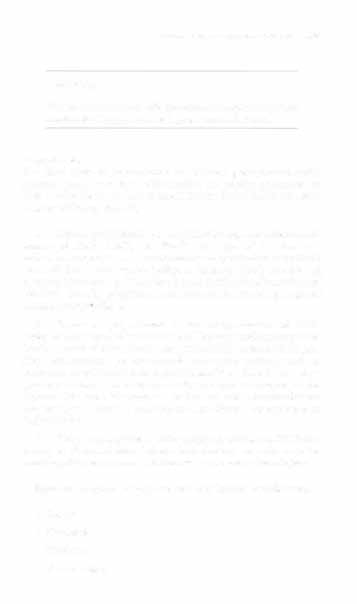i bc27f85be50b71b1 (124 page)
Read i bc27f85be50b71b1 Online
Authors: Unknown

406 AClffE CARE HANDBOOK FOR PHYSICAL THERAPISTS
•
Neurologic impairments, such as parasthesia of the extremities,
decreased balance, vibratory sense, and proprioception secondary
to posterior column degeneration",7
• Late neurologic manifestations include memory loss, mood
changes, and hallucinations's
Vitamin BIZ deficiency is diagnosed by clinical presentation, low
serum vitamin BIZ levels, elevated lactate dehydrogenase and MCV
values, and positive urine sampling (Schilling test). Neurologic symptoms are reversible if the onset is less than 6 months.",7 Management of vitamin BI2 anemia consists of lifelong vitamin BI2 supplementation and nutritional counseling.8.43.45
Clinical Tip
Patients who receive monthly vitamin BI2 injections may
have improvements in their alertness and activity tolerance
for a few days after the injection. Therefore, physical therapy intervention and goal setting should accommodate
these changes.
Folic Acid Anemia Decreased folic acid (folate) causes the production of macrocytic, normochromic RBCs. Folic acid deficiency is associated with a diet low in folic acid, impaired intestinal absorption of folic acid, pregnancy, or alcoholism. The presentation of folic acid
anemia is similar to vitamin 812 deficiency anemia, except there are no
neurologic sequelae. Folic acid anemia is diagnosed by clinical presentation, a low serum folate level, and elevated lactate dehydrogenase and MCV values.'9 Management of folic acid anemia consists of folic
acid supplementation."
Aplastic Anemia Aplastic anemia is characterized by a decreased
RBC production secondary to bone marrow damage. The bone marrow damage either causes irreversible changes to the stem cell population, rendering these cells unable to produce RBCs, or alters the stem cell environment, which inhibits RBC production. The exact mechanism of stem cell damage is unknown; however, present theories include exposure to radiation and chemotherapy or pharmacologic
agents, the presence of infection or malignancy, or as an autoimmune

VASCULAR SYSTEM AND HEMATOLOGY
407
response.50 RBCs are normochromic and normocytic or macrocytic.
WBC and Pit counts are also decreased. Definitive diagnosis is by
bone marrow biopsy. Signs and symptoms of aplastic anemia may
include the following:
• Fatigue and dyspnea
•
Fever or infection
• Sore throat
• Petechiae, bleeding gums, hematuria, or fecal blood
Management of aplastic anemia may include any of the following:
investigation and removal of causative agent, blood transfusion, bone
marrow transplantation, corticosteroids, and antibiotics. Aplastic
anemia can be fatal if untreated.8.43.45,47
Hemolytic Anemia The two types of hemolytic anemia are extravascular and intravascular hemolytic anemia. Extravascular hemolytic anemia involves the destruction of RBCs outside of the circulation,
usually in the spleen. This condition is usually the result of an inherited defect of the RBC membrane or structure, but it can be an autoimmune process in which antibodies in the blood cause RBC
destruction through mononuclear phagocytosis.
Intravascular hemolytic anemia is the destruction of RBC membrane within the circulation. It tesults in the deposition of Hgb in plasma. This may occur because of a genetic enzyme deficit, the
attack of oxidants on RBCs, or infection. It may also occur traumatically when RBCs are torn apart at sites of blood flow turbulence, near a tumor, through prosthetic valves, or with aortic stenosis.
Signs and symptoms of hemolytic anemia may include the following:
•
Fatigue and weakness
• Nausea and vomiting
• Fever and chills
• Decreased urine output
• Jaundice
• Abdominal or back pain and splenomegaly (intravascular only)

408
AClITE CARE HANDBOOK FOR PHYSICAL THERAPISTS
Management of hemolytic anemia may include any of the following: investigation and removal of the causative facror, fluid replacement, blood transfusion, corticosteroids, or splenecromy.8,43.45
Sickle Cell Anemia Sickle cell anemia is an autosomal homozygous
(hemoglobin 55 or HgSS) recessive trait characterized by RBCs that
become sickle (crescent)-shaped when deoxygenated. Over time, cells
become rigid and occlude blood vessels, thus causing tissue ischemia
and infarction. The risk of cerebrovascular accident and infarction of
other organs or muscles is high. SymptOms and physical findings of
sickle cell anemia may include the following:
• Jaundice, nocturia, hematuria, pyelonephritis, renal failure,
splenohepatOmegaly
• Retinopathy or blindness
• Chronic non healing ulcers of the lower extremity
• Systolic murmur and an enlarged heart
• Paresthesias
• Neck, chest, abdominal, bone, and joint pain
A complication of sickle cell anemia that may require hospitalization
is pain crisis, the intense pain of any major organ or body area. Pain
crisis, lasting from 4 to 6 days to weeks, can be precipitated by infection, dehydration, hypoxia, sleep apnea, exposure to cold, or menstruation, or it may be of unknown etiology.51 Acure chest syndrome is a situation that requires hospital admission. The patient presents
with chest pain, dyspnea, hypoxemia, and infiltrates on chest x-ray,
perhaps with pleural effusion.52 Acute chest syndrome may be caused
by intrapulmonary sickling, sickle cell emboli, or bone marrow or fat
embolism, or from infection.52
Management of sickle cell anemia may include the prevention or
supportive treatment of symptoms with rest, hydration, analgesia,
supplemental oxygen, and the use of corticosteroids or cytotoxic
agents, such as hydroxyurea," partial RBC exchange, and psychosocial support.8.4J,45.50 The average life expectancy of a patient with sickle cell anemia is 40-50 years.'7 Note that sickle cell anemia is differentiated from sickle cell trait. A patient with sickle cell trait has a heterozygous trait of Hgb that is asymptOmatic for the signs and
symptOms of anemia, although RBCs may sickle under the conditions
of h igh altitude, Strenuous exercise, or anesthesia.50


VASCULAR SYSTEM AND HEMATOLOGY
409
Clinical Tip
The use of oximetry can help the physical therapist and patient
monitor RBe oxygenation and gauge exercise imensiry.
Polycythemia
The three types of polycythemia are primary polycythemia (polycythemia vera), secondary polycythemia, and relative polycythemia.
They involve the abnormal increase in the number of RBCs and result
in increased blood viscosity.
1.
Primary polycythemia, or polycythemia vera, is an increase in the
number of RBCs, WBCs, and Plts.54 The origin of this disease is
unknown; however, there is an autonomous overproduction of erythroid
stem cells from bone marrow leading to increased blood viscosity and
expanded blood volume. Thus, there is a risk for thrombus formation and
bleeding " Primary polycythemia may convert to chronic myelogenous
leukemia or myelofibrosis.
2.
Secondary polycythemia is the overproduction of RBCs
owing to a high level of erythropoietin. The increased erythropoietin
level is a result of either altered stem cells (which automatically produce erythropoietin or erythropoietin-secreting rumors, such as hepatoma or cerebellar hemangioblastoma)" or chronic low oxygenation of tissues, in which the body arrempts to compensate for hypoxia. The latter is common in individuals with chronic obstructive pulmonary disease, cardiopulmonary disease, or exposure to high altitudes.
3.
Relative polycythemia is the remporary increase in RBCs sec-
ondary to decreased Auid volume (dehydration), as with excessive
vomiting, diarrhea, or excessive diuretic use, or after a burn injury.
Signs and symptoms of polycythemia may include the following:
• Fatigue
• Headache
• Dizziness
• Blurred vision

410 ACtrrE CARE HANDBOOK FOR PHYSICAL Tl-IERAI'ISTS
• Paresthesia in the hands and feet
• Splenomegaly (polycythemia vera only)
Management of polycythemia may include any of rhe following:
myelosuppressive therapy, antiplatelet therapy (this is controversial),
radiophosphorus (for primary polycyrhemia), smoking cessation and